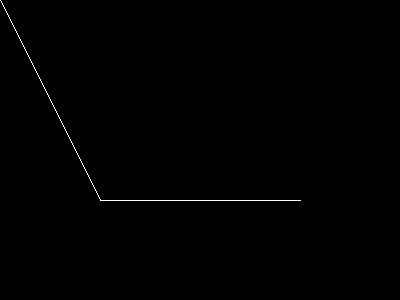In case you want to use an open polygon but are stuck with a PHP version prior to 7.2, a solution may be to 'backplot' your array to its original start. Say you have an array of pixels (below seperated by commas)
<?php
$arr = array();
for ($i = 0; $i < count($pixels); $i++) {
$pixel = explode(',', $pixels[$i]);
if (($pixel[0] > 0) && ($pixel[1] > 0)) {
$arr[] = $pixel[0];
$arr[] = $pixel[1];
}
}
imagepolygon($im, $arr, (count($arr) / 2), $otcolor);
?>
you can replace this by something like
<?php
$arr = array();
for ($i = 0; $i < count($pixels); $i++) {
$pixel = explode(',', $pixels[$i]);
$arr[] = $pixel[0];
$arr[] = $pixel[1];
}
// imageopenpolygon($im, $arr, (count($arr) / 2), $otcolor) is not possible, so...
for ($i = (count($pixels)-1); $i >= 0; $i--) {
$pixel = explode(',', $pixels[$i]);
$arr[] = $pixel[0];
$arr[] = $pixel[1];
}
imagepolygon($im, $arr, (count($arr) / 2), $otcolor);
?>imageopenpolygon
(PHP 7 >= 7.2.0, PHP 8)
imageopenpolygon — Desenha um polígono aberto
Descrição
Assinatura a partir do PHP 8.0.0 (não suportada com argumentos nomeados)
Assinatura alternativa (descontinuada a partir do PHP 8.1.0)
imageopenpolygon() desenha um polígono aberto na imagem informada
em image. A contrário de imagepolygon(),
nenhuma linha é desenhada entre o último ponto e o primeiro ponto.
Parâmetros
-
image Um objeto GdImage, retornado por uma das funções de criação de imagem, como imagecreatetruecolor().
points-
Um array contendo os vértices do polígono, por exemplo:
points[0] = x0 points[1] = y0 points[2] = x1 points[3] = y1 num_points-
Número total de pontos (vértices), que devem ser pelo menos 3.
Se este parâmetro for omitido conforme a segunda assinatura,pointsprecisa ter um número par de elementos, e será assumido quenum_pointsserá igual acount($points)/2. color-
Um identificador de cor criado com imagecolorallocate().
Registro de Alterações
| Versão | Descrição |
|---|---|
| 8.1.0 |
O parâmetro num_points foi descontinuado.
|
| 8.0.0 |
O parâmetro image agora espera uma instância de GdImage;
anteriormente, um resource gd válido era esperado.
|
Exemplos
Exemplo #1 Exemplo de imageopenpolygon()
<?php
// Cria uma imagem vazia
$image = imagecreatetruecolor(400, 300);
// Aloca uma cor para o polígono
$col_poly = imagecolorallocate($image, 255, 255, 255);
// Desenha o polígono
imageopenpolygon($image, array(
0, 0,
100, 200,
300, 200
),
$col_poly);
// Mostra a imagem no navegador
header('Content-type: image/png');
imagepng($image);
?>O exemplo acima produzirá algo semelhante a:

Veja Também
- imagepolygon() - Desenha um polígono